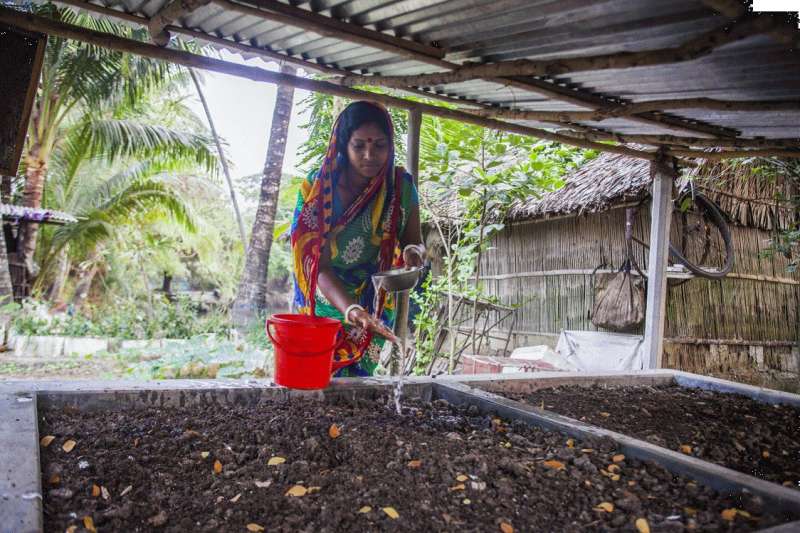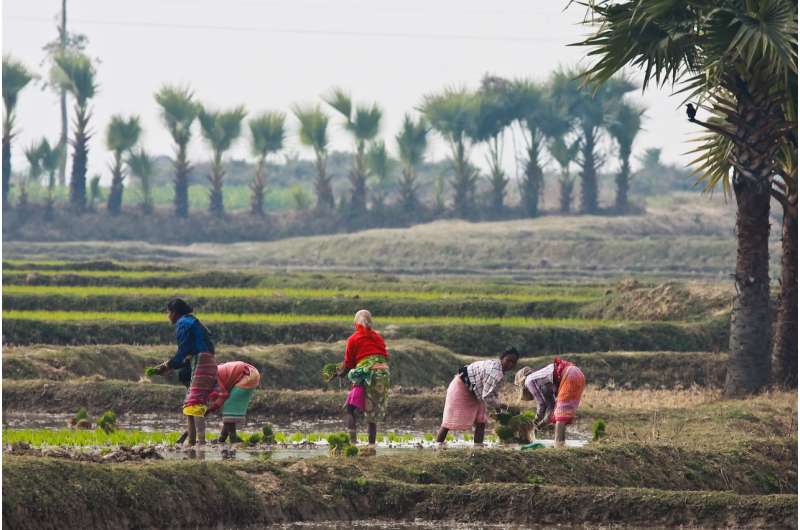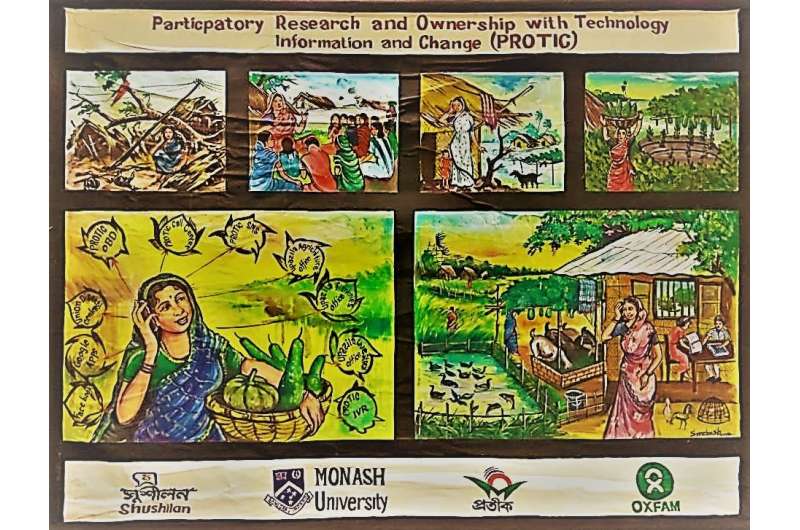How mobile phones are changing the lives of Bangladeshi women

If you happen to find a 4000-year-old clay tablet with cuneiform script, show it to Larry Stillman. He can read Akkadian, having studied ancient Mesopotamian languages at the Hebrew University, and also at Harvard, where he won a scholarship. "I was clever at that time in that area," he says.
Dr. Stillman is still interested in communications, but now works at the digital end of the spectrum with the Monash Centre for Organisational and Social Informatics.
For the past four years he's been investigating how mobile phones can improve the lives of women farmers in rural Bangladesh. How does that relate to ancient Akkadian?
"I don't know. My mother's still trying to work it out," he says. "There's nothing like the humanities to give you a grounding – I'm a real believer in general education."
Philosophically, Dr. Stillman has a longstanding interest in looking at technology from the perspective of what people want and need on the ground, rather than imposing solutions from above.
Oxfam collaboration
Oxfam approached him about collaborating with it in Bangladesh after becoming aware of his work on the Digital Doorway in South Africa. A Digital Doorway was a robust, multi-use computer that was installed in community meeting houses in poor, rural villages. The villagers helped record how access to the Doorway changed their lives.
Dr. Stillman has worked with women in three small rural communities in Bangladesh since 2014. In most rural families the women grow the produce and care for the livestock, while the men find paid work. Mobile phones have allowed these women to dial in a world of information. They receive SMS weather alerts, for instance, and might be warned to move their livestock if heavy rain is forecast.
They've learned how to vaccinate their poultry, how to recognise and treat diseases in their cows, and how to grow vegetables in baskets – a technique called 3-D farming – which means the produce is unaffected by salt and chemicals in the river silt. They talk to each other, share their new skills, and are generally becoming more savvy and resilient.
"As far as possible, we try to get the ideas happening from the ground up, because the women are experts in their everyday life," he says. "And even though they may not have a technical vocabulary, they can tell you exactly what their needs are, and they have responses to our intervention, as it's called. And you try to identify skilful leaders amongst them, the key stakeholders.

"It's a different type of research and intervention, where you're a specialist and you know the answer, and you march in and say, 'Here it is'."
When Dr. Stillman first visited Bangladesh, what struck him most was "the sheer numbers of people".
"No one is an individual," he says. "You're all part of a family or community. There's nothing that we love more than all being squooshed on a couch together, even if it's hot. We've all got to be together."
In the north of the country, many of the villagers live on sand islands on the river deltas formed from silt and sand carried down from the Himalayas. In the south, the villages lie in the delta on the Bay of Bengal.
The country is "a waterland, it's waterlogged", he says. "The villages stretch for miles and miles and miles, there's a break with fields, and then there's another one."
Strengthening relationships
When Dr. Stillman visits Bangladesh, he listens to the women villagers' concerns and observes how they live and interact with the people around them.
The phones have allowed the women to keep in touch with their mothers, and the family members they were forced to leave behind when they married and moved away.
"Now they can talk – and see each other – using a low-bandwidth app. And they talk about all sorts of things, as women talk about, you know. So this isn't so much about the sexy technology – it's about strengthening and taking advantage of social relationships and learning opportunities."
Dr. Stillman pulls out a canvas (pictured), painted by an artist who works at a local non-government organisation (NGO), depicting how the technology is changing lives. It shows a natural disaster, possibly a cyclone, with a palm tree bending and a woman in the foreground. "She has no power, her house has fallen down, she has a headscarf on and the animals are dead. There's no rice, and all the rest of it," he explains.

Another frame on the canvas shows a group of women discussing what they can do – one wears glasses, and is most likely a community development worker who has come to listen and to help.
The next frame shows the woman talking on her mobile phone, explaining how her life is changing. "I have received all this information through SMS, through the call centre that we have, where we can ask for help, through these apps, through Facebook, through local government and so on. And I'm not just growing rice now, I'm growing pumpkins and gourds and all sorts of things …"
Dr. Stillman points to the last frame on the story canvas: "So here she is. She's got ducks, some fish, and she'll have shrimp in the pond there, and chickens, and she's got livestock – they aren't necessarily for her, but she's raising them for market, for someone – and her children are going to school, and she's got a roof, and she's got a new sari, too. And she's very happy, and she's on the phone."
The project – called Participatory Research and Ownership with Technology, Information and Change (PROTIC) – might also change how Oxfam goes about its business in Bangladesh. Oxfam itself doesn't provide services in the country, but funds and partners with other NGOs there.
"Person-to-person service, or assistance, in the development context isn't always the right thing any more; it breeds a dependency," Dr. Stillman explains. "And a lot of things can be done through the mobile phone now. It is one to many, and many to one, and many to many. Internally, these organisations had to learn about it and change, like many organisations."
Empowering intervention
In the model he advocates, a village in rural Bangladesh is able to "control its information world, and it draws upon all these resources, into its own information needs. And the NGOs, they might become hosts of local information services that offer timely, local, current information."
The technology means that rural women in Bangladesh "are beginning to influence how Oxfam is in Bangladesh, and how the NGOs think about their work, how they learn and plan". It's a practical, empowering intervention in a country where 70 per cent of population live in villages, and where women grow their family's food.
Dr. Stillman believes Monash could do a power of good by building a stronger, long-term relationship with the tertiary sector in Bangladesh.
"Their academics are really good. A lot of high ones have doctorates from here, or the UK or Japan. The one thing they lack is resources. If we give 100 of them a library card, and a trip here every two or three years, that's a phenomenal thing that Monash can do. And that's not expensive."
He also hopes that the pilot will receive more funding and be rolled out more widely across the country. "Bangladesh has to find its own pathway with these things. They have a population of 160 million. Massive environmental issues. Food security, changing climate. We can help them, mentor them."
Provided by Monash University





















